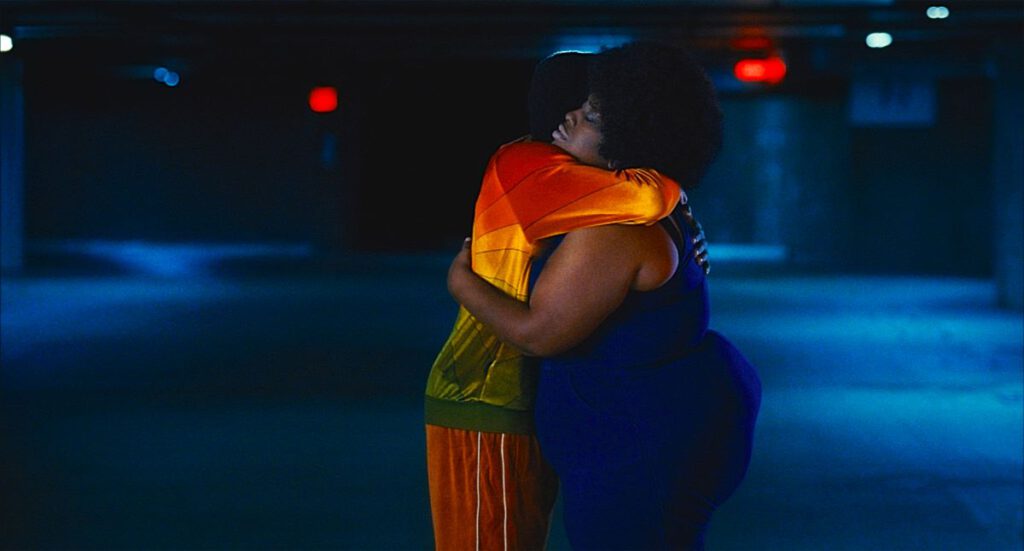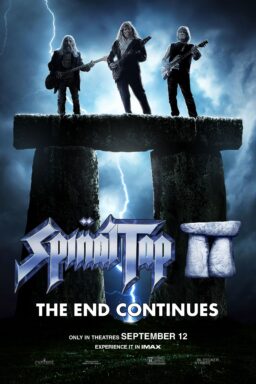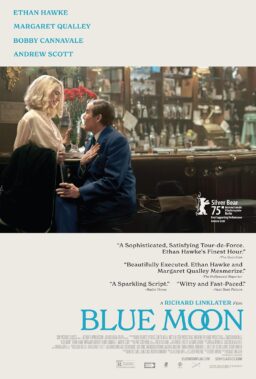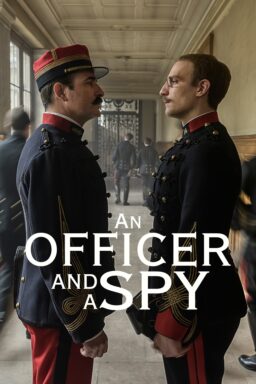Christopher Tenzis’ “Big Touch” is a wordless film about the healing power of physical contact. Some will read more into it, but that is one of the remarkable things about Tenzis’ three-minute piece. It’s meditative, multi-layered and somehow also gets the job done quickly. Many reviews I looked at on Letterboxd commented that they weren’t quite sure what it all meant, but that they also found much to admire about it and it made them feel … something.
In the film, a woman and little girl (mother/daughter? sisters?) are outside an elevator in a parking garage, caught in a heated argument that is starting to get physical. The doors open. Out steps an imposing woman who stops them. The little girl reaches her hand out, but her mother (or sister) pulls it away. I always wonder what would have happened if the girl made contact with this woman in the elevator. Was this a healing moment in itself? Later, a distressed man in the same parking garage is in need of a different kind of healing.
It’s hard to write about this film without saying too much. The film played countless film festivals during the 2021-22 seasons and with good reason. It’s beautifully shot and easy to program, but at that time, it also offered a moment of catharsis for those who had deep feelings about the lack of physical, loving contact between humans during the pandemic. It’s a film that doesn’t outright tell you what it’s about, but you know what it’s about, even if its delivery might be a bit strange and ambiguous. The film opens with a shot of a girl’s hand on an elevator button and that hand being slapped away by another. Touch isn’t always healing, of course, but in Tenzis’ film, it’s everything.

Q&A with Christopher Tenzis:
How did you come up with this?
“Big Touch” was inspired by the hyperrealism of sculptor Ron Mueck whose subjects are people suspended in time by the weight of their emotions. Some of Mueck’s sculptures are gigantic, towering over the observer, and other times they’re so small that they need to be placed on a pedestal to be at eye level. I wondered if their size was in direct relation to their feelings; not that one felt more than another, but that the feelings themselves dictated their size. For example, a man was tiny because he felt marginalized and helpless, and a woman was huge because she was swelling with love yet had no place to put it. Then I wondered what would happen if Mueck’s creations could touch each other? Would they perhaps equalize in size because, for a moment’s relief, they would be reminded that they were not the sum total of the singularity of an emotion, but that they also had bodies with which to feel?

What was the casting process like for this?
There were many conversations during casting about how race could impact the film but we wouldn’t know until we found the right talent. Because the film was first and foremost about the universality of empathy through touch, finding a soulful cast who could communicate that theme was my priority. Raymond Ejiofor was the only person we looked at who not only understood the character, but could express the emotions with his body. Astra Marie Varnado, who plays Judy, our heroine, was the only one we saw who was bursting at the seams to express love. Suddenly, with Ray and Astra in place, the film took on new meaning. Years ago, I met Robert Altman at the Austin Film Festival and he said that he didn’t cast for what he wanted, he casted for what he didn’t know he wanted. So the palpability and sincerity of the symbolic narrative is evidence of trusting that process.
This is the kind of film that is open to many interpretations. Have you heard or read any reactions that surprised you?
The biggest surprise has been the film’s success. “Big Touch” has played over 150 festivals in thirty countries for three years winning ten awards. In fact, in 2024, the film will still be playing festivals. On multiple occasions, “Big Touch” was the only U.S. film selected by international festivals, such as Festival International du Film de Mons, a festival dedicated to films about love, which selects only Belgian short films, and Martovski Festival in Belgrade, a 65-year-old festival where the film’s Best Cinematography prize was collected by the U.S. Embassy on our behalf. We screened at the Curzon Soho Cinema in London and over 100 cinemas in France after its success at Très Court International Film Festival. The film has played with live musical accompaniment in Chicago, Serbia and Italy. When we were first submitting the film in 2019, no festivals would screen it. It stands to reason that when the pandemic happened, the world caught up to its optimism and the importance of touch.
What’s next for you?
Professionally, I work in editorial. I was on the Amazon MGM Studios film “Cassandro,” starring Gael García Bernal and Bad Bunny and more recently Todd Haynes’s film “May December” with Natalie Portman, Julianne Moore and Charles Melton. I actually have a cameo as Natalie Portman’s cuckolded fiancée. Otherwise, I’m currently writing a cookbook based upon the 1987 British cult comedy “Withnail & I.”












